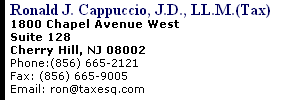|
Comprehensive
Compilation |
Most
small businesses require a cash infusion at some point, for
needs like expansion, working capital or investments.
Getting a large loan involves more than pouring your
heart out to a bank officer and hoping the lender will take a
risk on you. You need to be prepared to tell the whole story,
present a business plan and make the lender believe in
the future of your company.
The best plan is to compile a comprehensive proposal. That
way, you can shorten the process and bolster the chances of
approval. Astute business owners, along with their
accountants, have most of this information available since
it's part of the daily management of the company.
This checklist, which you can print out, includes the items
lenders might want to see if you apply for a major loan. (This
is an all-inclusive list. Depending on your situation, you
won't need all the items. Talk with your accountant and
lender.)
Why and how much?
Proposed use of funds and the amount
requested.
Sources of repayment (at least two).
Statements of personal guarantees to repay the loan, if
required.
Business history
The nature of your business.
How your company evolved.
Management
Details about members of management, including ages,
salaries, experience, business affiliations, education and
ownership percentage. The names of other board members and
advisers, such as your accountant and
attorney.
Management contracts.
Life insurance policies and plans for management
succession.
Business information
Primary and secondary markets.
Major product lines and secondary product
lines.
Customer information.
Major suppliers. Specialized resources. Delivery
Channels.
Marketing plan.
Business cycle.
Competitive research and evaluation.
Risks to the success of the business.
Industry information and how your business is different
from competitors.
Economic research.
Inventory and work in process overview.
Fixed assets and facilities, including recent appraisals,
valuations, insurance coverage, age, and lease agreements in
place.
Specialized equipment or processes. Patents, trademarks,
copyrights and other proprietary ownership.
Number of employees, critical skills required and turnover
rates. Include contract and commissioned workers.
Any labor union relations and past, current or potential
related issues.
Financial information
Balance sheets, income statements, and tax
returns.
Relevant financial ratios.
Realistic balance sheet and income statement forecasts for
one to three years. List of assumptions that led to the
projections
Monthly cash flow analysis for the past year and
projections for next year.
Monthly or quarterly cash budget for at least one
year.
Major shareholders' personal financial
statements.
| 
| 




